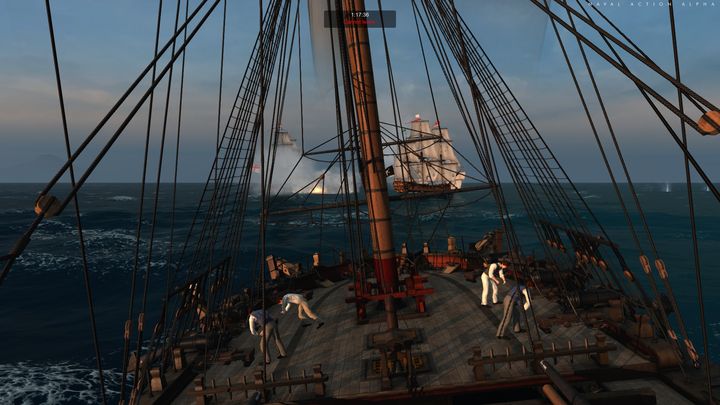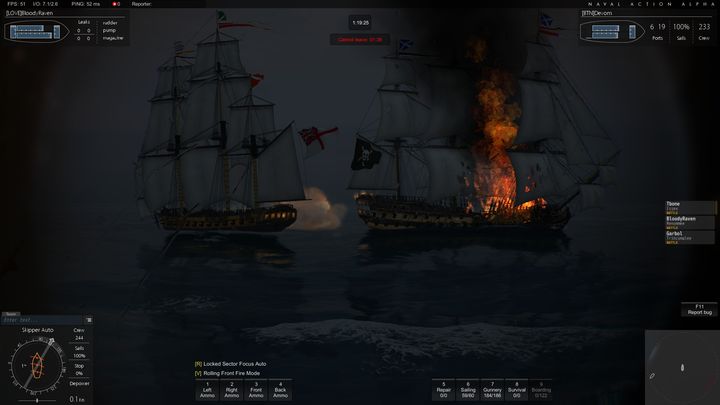Early Access' most glaring issues based on the example of Naval Action
Naval Action is one of the most unique games available in Steam’s Early Access Program. The game from Game-Labs is also a great example showing how problematic this service can be in various respects.

A niche game defying current trends and lacking the support of a giant publisher would have probably never materialized outside the imagination of a developer just a couple of years ago. And even if it had, I suppose a very modest prototype would be the most you could ask for. But times have changed, as one witcher said, and programs such as Early Access and the availability of free developing software such as Unity or Unreal game engines opened an ocean of new possibilities for game developers. Pretty much anyone can make video games nowadays – which is obvious if you take a look at the amount of crap that found its way to Steam lately. In this ever-growing pile of sheer garbage, you can still fish out games that are interesting, surprisingly good or otherwise special. A proud member of the latter category is without a doubt Naval Action, a game continuously polished by its creators, Ukrainian studio Game-Labs. But things are not honky-dory all the time. The game is dealing with some problems related to Early Access, and we’re going to analyze them as a general phenomenon, with Naval Action serving as our case study.
A sailor’s tale

The game, which you may already be familiar with, harks back to the times when corvettes, brigs and other ships propelled only by the mighty force of the wind reigned the seven seas – or somewhere between the 17th and 19th century, to be less poetic and more precise. Such a concept may seem outdated today, but that didn’t prevent the developers from going all the way and approaching the subject in the most realistic way possible in terms of physics, ship design and minor details of the sea battles – which admittedly isn’t the ultimate way of ensuring mainstream success of your game (contrary to making things easy, vivid, exploding, and generally epiiic!). Yet in order to get the full picture of what a great phenomenon Naval Action actually is and what its greatest problems are, we have to take a look at the developer first. Let me sum up some facts that influenced Game-Labs’ work over the past few months.
For starters, let’s keep in mind that the game was launched at the end of 2014 as something called Sea Trials – a plain-simple multiplayer game mode focused on sea battles between players. The feedback received from the players who had been yearning for such a game was so enthusiastic that the developers decided to uphold their initial idea and create a proper, open-world MMO. And that’s when the difficulties begun. The fan base grew exponentially – during surges of daily activity, as many as 2,000 players were online. Such a number of people is bound to cause divisions, and so three main factions emerged: aspiring imperialists, who formed alliances and focused on fighting over West Indies’ ports; people who preferred small-scale, dynamic battles between a few players; and typical loners, who played for the atmosphere and PvE challenges. Each groups expected a slightly different experience from the devs, who – riding on the wave of their success – were trying to cater to them all, adding some goals of their own into the mix.

Now, it doesn’t take a rocket scientist to figure out that such discrepancies in the fans’ expectations combined with the developers’ inability to choose a single, defined direction for the game – be that introducing more ships, implementing global diplomacy mechanics or giving up on PvE for the sake of PvP – had a negative impact on the title itself, as well as its reception – which is best ascertained by one statistic, published during a Q&A session: 80% of the players were put off after the game’s initial hours, because it lacked any proper introduction or a tutorial. Instead, the devs focused their efforts on enhancing the endgame, but, once again, it wasn’t quite what the veterans expected (for example, instead of ten ships to choose from, as initially planned, three times more were introduced in the Early Access – of course at the expense of other important elements).
Our anchor we'll weigh
We’re now reaching the bottom of the issue – who’s to blame for this approach? Obviously, most of the players will say: the developers. The question is, then, where did they go wrong? Was listening to the players’ demands a mistake? Maybe they listened to the wrong group? Or did they squander the money on booze, ladies and expensive hotels in the Caribbean? The answer is far from obvious. What we need to do is take a few steps back and look at the creative process of not only Naval Action, but also the great majority of Early Access titles. Game-Labs consists of only ten people. Two designers, three artists, three testers and two programmers. Ten people, who – in just two years – managed to write and launch a totally playable MMO with an established game world, a multiplayer code that works better than most new AAAs, and in addition some really decent audio and graphics. Without microtransactions and with no subscription-based model. It’s a feat unattained by any publisher I know, and a clear sign that people involved are truly dedicated to creating a game that no one else would dare make these days.
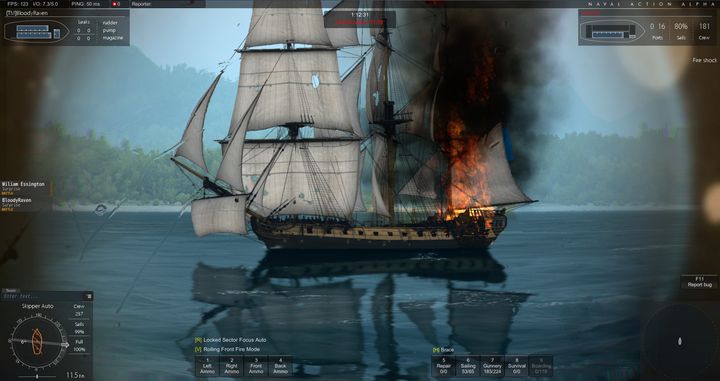
Another problem – this time a universal one – is the issue of open development; a byproduct of crowdfunding campaigns and programs such as the Early Access. The developers ceased to be the only people involved in the production of games. In many cases, and this also applies to Naval Action, we could say that the blame is equally distributed among the devs and the community supporting the project. Sure, we can blame the guys from Game-Labs that they felt too cozy after the game’s initial success and overestimated their capabilities. After all, this isn’t Ultimate General: Gettysburg (their previous game) – this is a full-blown MMO.
However, let’s not marginalize the voice of the players in this “open development situation”. They provide the developers with constant feedback, share their impressions, and sometimes demand changes by force, barraging a given game with negative reviews on Steam. And this creates a rather obvious problem – the people of the Internet are not quite the masters of common sense, which would be a welcome trait here. When spending €40 or €50 on a title from a studio as small as Game-Labs, the production of which started two years earlier, you can’t just expect getting a game that would take five years of work for a full-scale development team. Unfortunately, it is what it is. It’s hard not to side-eye the authors of thoroughly negative Steam reviews when you see some of them have spent well over 600, 1,200 or even 2,000 hours in the game.
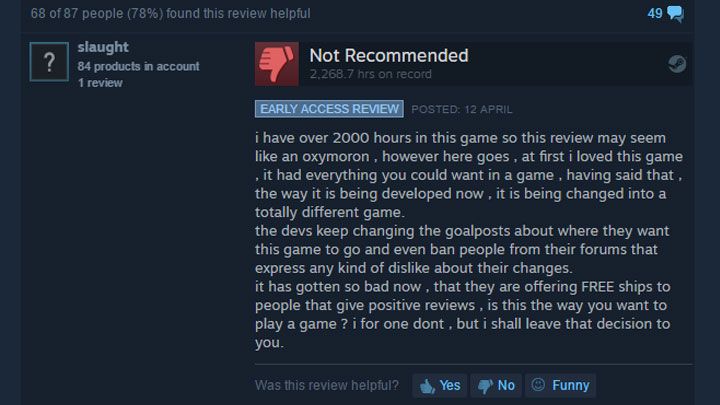
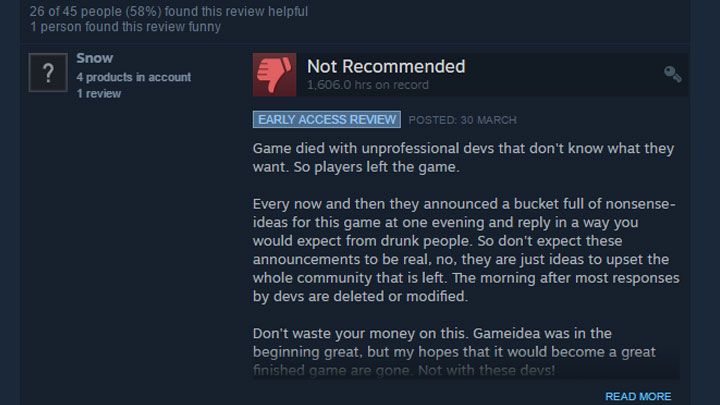
When paying for the right to participate in the development of a game, people have to acknowledge that said game will be subject to many a change over the following months and years, and that the devs will be experimenting, modifying, introducing and deleting different elements all the time. Unfortunately, some players seem to confuse the game’s early alpha with the end product – an overwhelming number of negative reviews prompted by different experiments in Naval Acton is seriously exaggerated, and countless dramas unraveling on the game’s forums, reddit or Steam are not actually doing the fans–devs relationship any favors. There were even cases of trolling by some officious fans, to which the studio responded with bans. What the situation is begging for is a degree of common sense. Everyone who backed the project needs to realize that Game-Labs simply cannot follow the advice of only one, most dedicated group of players, because that would make it impossible to support an online game of this kind.
Fair wind
Considering that 80% of around 100,000 players who have bought Naval Action to date didn’t play more than a couple hours before quitting, we’re left with around 20,000 active users. That’s not enough for the game to be able to flourish. Game-Labs needs to start thinking about reaching out to less advanced and experienced players. If the game is supposed to be addressed not only to the hardcore department, a series of changes has to be introduced – and the vets might not like that. I guess even more arguments and flames are on the cards, but hopefully the studio from Ukraine will be able to deal with that and finish the game by the end of 2017. Otherwise, the virtual sailors will have to wait another decade or so for a game with a similar premise. And that would be a great shame, because Naval Action is an outstanding game in more than one respect, even in its current flawed glory.

